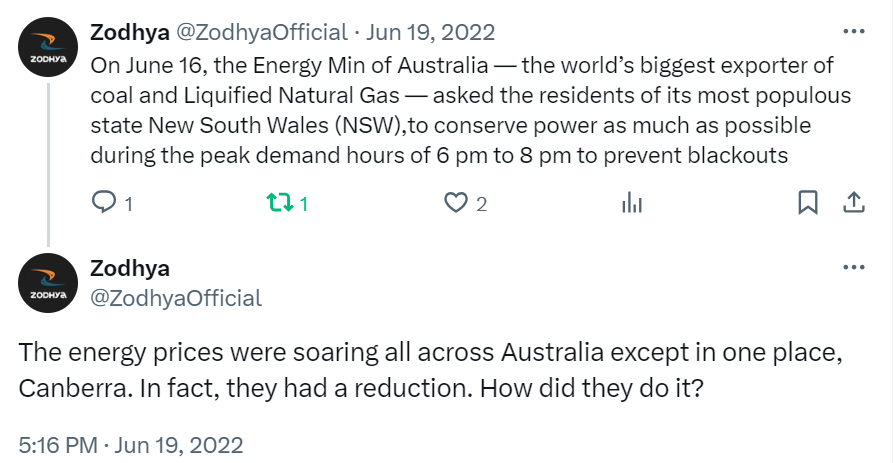In this edition, we will be uncovering truths about our energy consumption, ongoing supply-demand issues and what could be done to solve a few issues.
Here we go, then.
Australia, which we usually might associate with pleasant beaches and an over-achieving sports ecosystem is under power crisis. This isn’t an easy issue because it is bigger than India in size and has an estimated population of 2.57cr (25.7 mn), which is nearly 20% less than that of the Delhi NCR🥶. So, what’s happening in Australia, which is a developed economy, that is pushing into an energy crisis? Here’s a Twitter thread which answers your question.

More here.
Sri Lanka, with its downturn in the economy, is facing severe power cuts and shortage of fuel.
Now, as we discuss Australia’s and Sri Lanka’s energy crisis, doesn’t it make sense to look at what’s happening in India?
There was a shortage in power supply in the whole of May in India, which we covered here. There are estimates that the power demand is bound to increase to 215GW from the record 211.85 GW as of June,10. According to a survey by an NGO, the average availability of power in rural areas was about 12.5 hours at the national level before 2014. Today it is reported to be 22.5 hours. Also, the power minister RK Singh said that it is estimated to touch 239 GW in the next financial year, a huge 10% increase.
With the rapid rise in demand, it increases the chances of power shortage. With summer over in many parts of India, the solar generation will be lower thus increasing dependence on coal. And remind you, coal is not easy to mine during monsoon.
So, how do we play this out, not just now but also long-term?
Importance of energy-efficiency
This turns out to be a major headache as inefficiency in power usage isn’t easy to track (unless you are using devices like Zodhya’s 🙂). The problem here is more correlated to the behaviour of the consumers including us and how we utilised the power given to us.
As per a report by BEE (Bureau of Energy Efficiency):
The scope for energy efficiency improvements in existing buildings is immense. Energy Audit Studies have revealed a savings potential to the extent of 40% in end-use such as lighting, cooling, ventilation, refrigeration etc. In order to address this institutional barrier, the Bureau of Energy Efficiency has taken up the task of institutionalizing energy efficiency services, and of promoting energy efficiency delivery mechanisms, such as the development of a market for Energy Service Companies (ESCOs), which address the risks perceived by building owners.
Japan, which is known to be one of the mot developed economies, has asked its citizens to set their air-conditioners to 28C, among other saving measures like watching TV for fewer hours, switching of the rice cookers when on keep-warm mode and refrain from using heaters on toilet seats.

